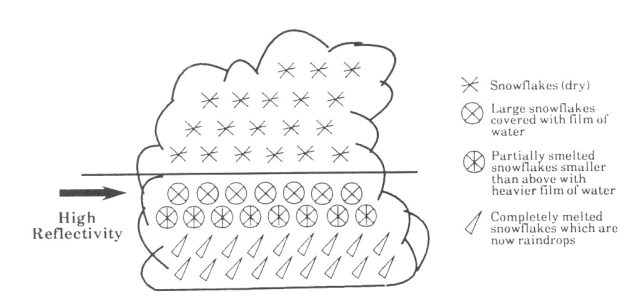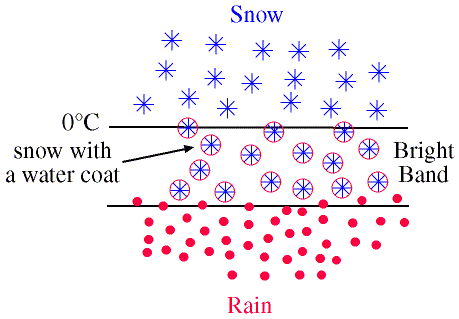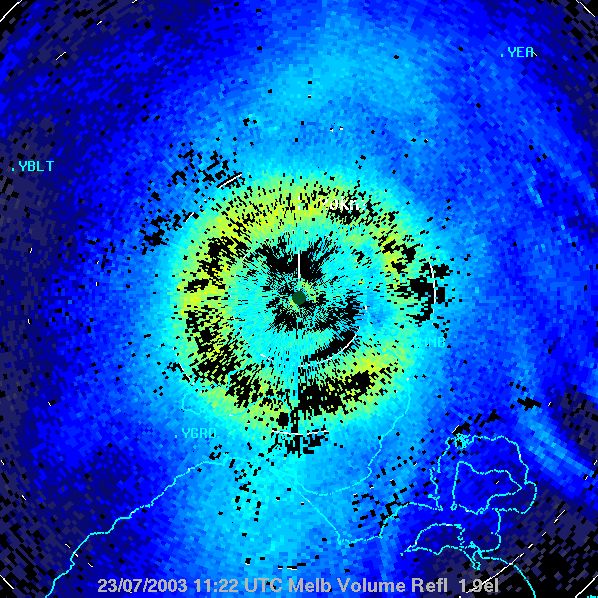Bright Band
The efficiency of precipitation particles in returning transmitted energy to the radar, as discussed earlier, depends on size, concentration, state and shape. Ice particles which are relatively small and contain no liquid water return about one fifth as much energy to the radar as the equivalent amount of liquid water. The reflectivity factor will therefore be low.
As the ice particles fall into warmer air they will melt, initially on the outside, and there will be some coalescence of individual snow crystals into clusters of crystals. This will be observed on radar as a significant increase in reflectivity factor just below the melting level. As the precipitation particles fall further they will melt into raindrops with a sharp increase in terminal velocity and a decrease in drop concentration. The larger raindrops will also tend to breakup.
This process is illustrated in the figure below, and is often observed on radar as a “bright band” in reflectivity in the layer just below the melting level. It is best seen on the RHI display but will also be observed on the PPI display if the radar beam intersects the melting level.
Bright Band
A region of relatively high effective reflectivity which usually appears as an elevated layer at the height where falling ice particles begin to melt and thus become water coated (the melting layer)

 A region of relatively high effective reflectivity, usually an elevated layer just below the freezing level (~1km depth).
A region of relatively high effective reflectivity, usually an elevated layer just below the freezing level (~1km depth).
Due to large, water coated ice particles at relatively high concentrations because they are falling slowly.
Figure on the right: Location of the melting layer causing the bright band
Figure below: Bright Band on the RHI display

